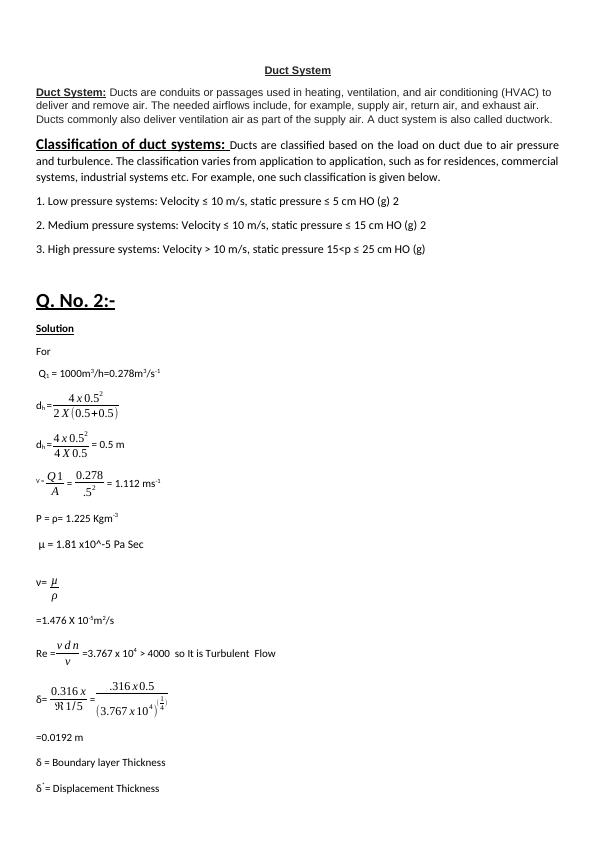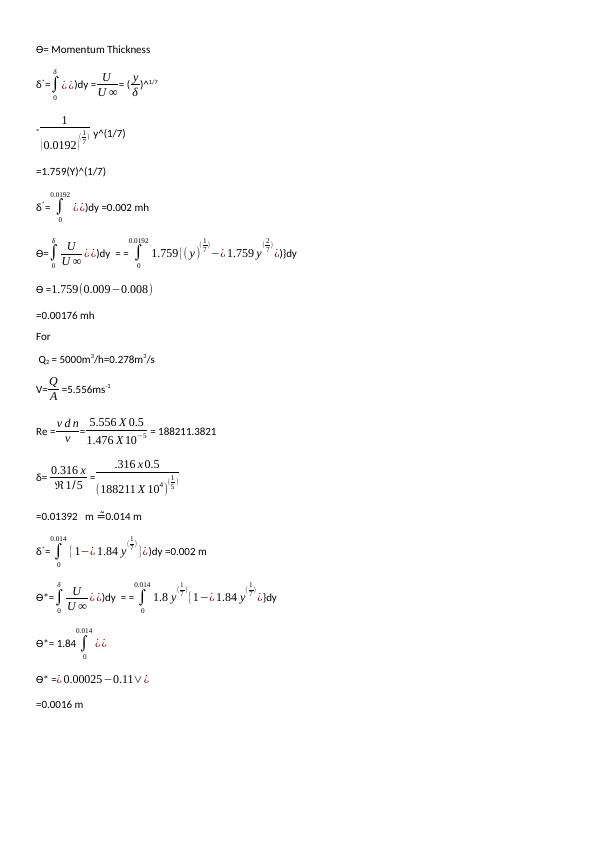Ask a question from expert
SolidWorks Flow Simulation Project Report
15 Pages1489 Words333 Views
Added on 2020-05-16
SolidWorks Flow Simulation Project Report
Added on 2020-05-16
BookmarkShareRelated Documents
Heat Transfer and Fluid MechanicsIntroduction:The Degree Hotness and Coldness Is called heating.Types of heating system:The most popular space heating systems are1. Forced air furnaces:A forced-air central heating system is one which uses air as its heattransfer medium. These systems rely on ductwork, vents, and plenums as means of airdistribution, separate from the actual heating and air conditioning systems. The return plenumcarries the air from several large return grills (vents) to a central air handler for re-heating. Thesupply plenum directs air from the central unit to the rooms which the system is designed to heat.Regardless of type, all air handlers consist of an air filter, blower, heat exchanger/element/coil,and various controls. Like any other kind of central heating system, thermostats are used tocontrol forced air heating systems. Forced air heating is probably the type of central heating mostcommonly installed in North America. It is much less common in Europe, where hydronic heatingpredominates, especially in the form of hot-water radiators.2. Hot water boilers: - hot water boilers involve the heating of water and creation of steamthrough the burning of fuel. The heated water is transmitted through boiler tubes, while the steamcreated is circulated throughout the facility with the assistance of radiators.3. Electric heat pumps:heat pumps use electricity to move heat from a cool space to a warmspace, making the cool space cooler and the warm space warmer.Cooling:Cooling is the transfer of thermal energy via radiation, conduction or convection. Types of Cooling System:- 1.Room Air Conditioners2.Evaporative Coolers.3.Ductless Mini-Split Air Conditioners.4.State of the Art Cooling.Q. No.:-1Solution0.5m0.5m20

Q1= Min Flow Rate = 1000m3/h=0.278m3/sQ2= Max Flow Rate = 5000m3/h=1.389m3/sT1=15°c = 288kT2=40°c=313k Characteristic Length l=Acsp=4x0.522X(0.5+0.5)=0.5mQ=ρ1A1V1 = ρ2A2V2 (ρ1= ρ2)SoA1V1 = A2V2 V1= Inlet VelocityV2= Outlet Velocity of AirΡ Air= ρ= 1.225 Kgm-3μAir = μ = 1.81 x10^-5 Kgs/ m^-3 For Q1 = 1000m3/h=0.278m3/sPower Required to Set the Temp = ̇mCpdT = ̇mCp(T2-T1)Cpair =1.005 KJ/KgK ̇m = ρQ1 = 1.225 X 0.278 =0.3406 KgS-1Power = 0.3406 X 1.005 X (313-288)=8.5576 K wattsPower= 8.5563 KW =8.56 KwQ2 = 5000m3/h=1.389m3/sPower = ̇mCpdT = ρQ2Cp(T2-T1)P = 1.225 X 1.389 X 1.005 X (313-288)P= 42.75 KW

Duct SystemDuct System:Ductsare conduits or passages used in heating, ventilation, and air conditioning (HVAC) to deliver and remove air. The needed airflows include, for example, supply air, return air, and exhaust air. Ductscommonly also deliver ventilation air as part of the supply air. Aduct systemis also calledductwork.Classification of duct systems: Ducts are classified based on the load on duct due to air pressureand turbulence. The classification varies from application to application, such as for residences, commercialsystems, industrial systems etc. For example, one such classification is given below.1. Low pressure systems: Velocity ≤ 10 m/s, static pressure ≤ 5 cm HO (g) 22. Medium pressure systems: Velocity ≤ 10 m/s, static pressure ≤ 15 cm HO (g) 23. High pressure systems: Velocity > 10 m/s, static pressure 15<p ≤ 25 cm HO (g) Q. No. 2:-SolutionFor Q1 = 1000m3/h=0.278m3/s-1dh =4x0.522X(0.5+0.5)dh =4x0.524X0.5 = 0.5 mV = Q1A = 0.278.52 = 1.112 ms-1Ρ = ρ= 1.225 Kgm-3μ = 1.81 x10^-5 Pa Secν= μρ=1.476 X 10-5m2/s Re =vdnν =3.767 x 104 > 4000 so It is Turbulent Flowδ= 0.316xℜ1/5 =.316x0.5(3.767x104)(14)=0.0192 mδ = Boundary layer Thickness δ*= Displacement Thickness

Ɵ= Momentum Thicknessδ*=∫0δ¿¿)dy =UU∞= (yδ)^1/7=1(0.0192)(17) y^(1/7)=1.759(Y)^(1/7)δ*=∫00.0192¿¿)dy =0.002 mhƟ=∫0δUU∞¿¿)dy = =∫00.01921.759{(y)(17)−¿1.759y(27)¿)}dyƟ =1.759(0.009−0.008)=0.00176 mhFor Q2 = 5000m3/h=0.278m3/sV=QA =5.556ms-1Re =vdnν=5.556X0.51.476X10−5 = 188211.3821δ= 0.316xℜ1/5 =.316x0.5(188211X104)(15)=0.01392 m 0.014 m=̃δ*=∫00.014{1−¿1.84y(17)}¿)dy =0.002 mƟ*=∫0δUU∞¿¿)dy = =∫00.0141.8y(17){1−¿1.84y(17)¿}dyƟ*= 1.84∫00.014¿¿Ɵ* =¿0.00025−0.11∨¿=0.0016 m

End of preview
Want to access all the pages? Upload your documents or become a member.
Related Documents
Environmental Sustainable Design for Rainwater Harvesting and Solar Energylg...
|1
|510
|295